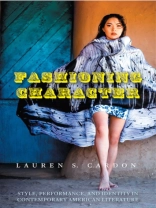It’s often said that we are what we wear. Tracing an American trajectory in fashion, Lauren Cardon shows how we become what we wear. Over the twentieth century, the American fashion industry diverged from its roots in Paris, expanding and attempting to reach as many consumers as possible. Fashion became a tool for social mobility. During the late twentieth century, the fashion industry offered something even more valuable to its consumers: the opportunity to explore and perform. The works Cardon examines—by Sylvia Plath, Jack Kerouac, Toni Morrison, Sherman Alexie, and Aleshia Brevard, among others—illustrate how American fashion, with its array of possibilities, has offered a vehicle for curating public personas. Characters explore a host of identities as fashion allows them to deepen their relationships with ethnic or cultural identity, to reject the social codes associated with economic privilege, or to forge connections with family and community. These temporary transformations, or performances, show that identity is a process constantly negotiated and questioned, never completely fixed.
Содержание
Acknowledgments
Introduction: Fashion as Freedom
1. Plath, Sexton, and the ‘New Look’
2. The Beat Writers and the Dawn of Street Fashion
3. Afrocentric Fashion in the Writing of Walker, Morrison, and Senna
4. American Indian Literature and a Legacy of Misappropriation
5. Gendered Fashion and Transgender Literature
Conclusion: Fashion and Fiction of the Future
Notes
Works Cited
Index
Об авторе
Lauren S. Cardon is Associate Professor of English at the University of Alabama and author of Fashion and Fiction: Self-Transformation in Twentieth-Century American Literature (Virginia).












